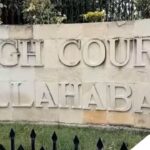Code
Statements of facts in issue or relevant facts, made in published maps or charts
generally offered for public sale, or in maps or plans made under the authority of the Central
Government or any State Government, as to matters usually represented or stated in such
maps, charts or plans, are themselves relevant facts.
Explanation
Section 30 of the Bharatiya Sakshya Adhiniyam (BSA) outlines that certain types of documents—specifically maps, charts, and plans—are admissible as relevant evidence in legal proceedings when they reflect facts in issue or relevant facts.
The provision recognizes:
- Published maps or charts sold to the general public (e.g., atlases, survey maps).
- Maps or plans created under the authority of the Central or State Government (e.g., Survey of India maps, municipal zoning plans).
These documents are presumed to be accurate regarding the matters they usually represent—such as geographical features, boundaries, or routes—and are considered trustworthy sources of fact.
Illustration
→ Example 1: In a boundary dispute between two neighboring landowners, a Survey of India map showing the official boundary line is admissible as a relevant fact under Section 30.
→ Example 2: During a criminal trial involving a murder near a hill station, a tourist map published and sold to the public, showing the roads, trails, and nearby landmarks, is relevant in determining the accused’s route.
Common Questions and Answers on Section 30 BSA
1. Are tourist maps sold in bookstores admissible in court?
Yes. If the map is generally offered for public sale and shows facts in issue or relevant facts (like routes or geography), it is admissible under Section 30 BSA.
2. What types of government maps are considered under this section?
Examples include:
- Survey of India maps
- Geological Survey reports
- Zoning plans approved by municipal authorities
- Environmental maps prepared by state agencies
3. Can the accuracy of a map be challenged in court?
Yes, while such maps are admissible as relevant facts, parties can still question their accuracy or applicability to the facts of the case.
4. What is the legal advantage of using maps or plans under Section 30?
They serve as objective, recognized representations of physical spaces or boundaries—thus, they help avoid relying solely on witness testimony or memory.
5. Is a Google Map screenshot considered relevant under Section 30?
Not under Section 30 specifically. Google Maps are not published under government authority or as officially recognized public charts. However, they may be admissible under other provisions or as secondary evidence.
Conclusion
Section 30 of the Bharatiya Sakshya Adhiniyam simplifies legal proceedings by allowing courts to rely on official or publicly available maps and charts as relevant evidence. This provision acknowledges the utility and reliability of such documents in cases involving geography, location, boundaries, and planning.
For in-depth legal insights and detailed breakdowns of Indian evidence laws, visit ApniLaw today!













